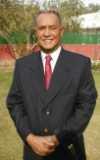Archives
No Hill State No Rest
 Anyway, 84-year-old former Speaker and Opposition leader of the tribal dominated Meghalaya has come forward to chronicle the 18 year-old peaceful sustained people’s movement through Gandhian method for the emergence of Meghalaya from a district council to an autonomous and then a full- fledged state on January 21, 1971 in his latest and ninth publication titled “NO HILL STATE NO STATE” published by Vesta Book Agency. He should be complimented for apprising the people of the region and outside, especially the younger generation that the teachings of Mahatma Gandhi are still relevant and a long peaceful movement without causing bloodshed or violence can be successful.
Anyway, 84-year-old former Speaker and Opposition leader of the tribal dominated Meghalaya has come forward to chronicle the 18 year-old peaceful sustained people’s movement through Gandhian method for the emergence of Meghalaya from a district council to an autonomous and then a full- fledged state on January 21, 1971 in his latest and ninth publication titled “NO HILL STATE NO STATE” published by Vesta Book Agency. He should be complimented for apprising the people of the region and outside, especially the younger generation that the teachings of Mahatma Gandhi are still relevant and a long peaceful movement without causing bloodshed or violence can be successful.
As one of the frontline leaders of the movement, Kyndiah was fortunate to witness the events at close quarters from the 1960s to 1970s.The people were fortunate as they had an astute leader in Captain Williamson A Sangma who was President of the APHLC and guided the movement till the state was created. He later became the first Chief Minister of the newly created state and was an undisputed leader. There was another outstanding leader whose contribution must be recalled with gratitude. He was SDD Nichols Roy, son of Rev JJM Nichols Roy. Rev Roy later became a Member of the Constituent Assembly and was instrumental in the inclusion of the Sixth Schedule in the Constitution.
The All Party Hill Leaders’ Conference was preceded by Eastern India Tribal Union (EITU) which was not a political party in the conventional manner. It was a forum of several district parties which were in course of time welded as a disciplined party.
But the movement for a separate state gained momentum and vigour after the APHLC came into existence and the objective of the movement and strategy were spelt out in an unambiguous term. People, particularly the younger generation, may be tempted to ask a question about the source of inspiration for a peaceful movement in the North East since the rate of literacy was not as high as it is now although they were resentful of the big brotherly attitude of some influential leaders in the plains. As Kyndiah rightly says, the demand for statehood of the hill people came from the fertile mind of Rev JJM Nicholas Roy who was extremely unhappy with the prevalent political contours in the Khasi and Jaintia Hills which the British rulers in pursuance of their divide and rule policy had bifurcated into 25 Khasi states, 34 villages in Khasi Hills were British territories, Jaintia Hills having 20 Doloiships and 2 Sirdarships (British areas) and the British area town of Shillong.
When the Constituent Assembly constituted the Advisory Committee for Minorities, Rev Roy had taken up the opportunity to demand the creation of the Khasi –Jaintia Federated State which would have the power to legislate and perform functions for good governance. This is how the seed for statehood for a full-fledged state within the Indian Union was born.
The book is informative on the movement for the creation of Meghalaya and the leading personalities, who were associated with the people’s aspirations and who made tremendous sacrifices. It will be a valuable guide to the general public and research scholars as well.
The author does not exaggerate when he says for as long as 18 years the slogan “NO Hill State NO Rest” reverberated in the hill areas of the northeastern region from 1954 till the Hill State of Meghalaya was achieved in 1972. The author also recalls the sympathetic attitude of Pandit Jawaharlal Nehru and Indira Gandhi to the hill people and their aspirations. It was the Government headed by Indira Gandhi which had taken the initiative in the enactment of the North Eastern Areas (Reorganization) Act by Parliament for the creation of Meghalaya and she had taken the trouble of coming over to Shillong to address the people of the newly created autonomous state at a function on April 2, 1970, and later on the occasion of its upgradation to a full-fledged state.
The book contains several rare photographs about history of the peaceful movement and some documents which will interest the general public as well as research scholars.

